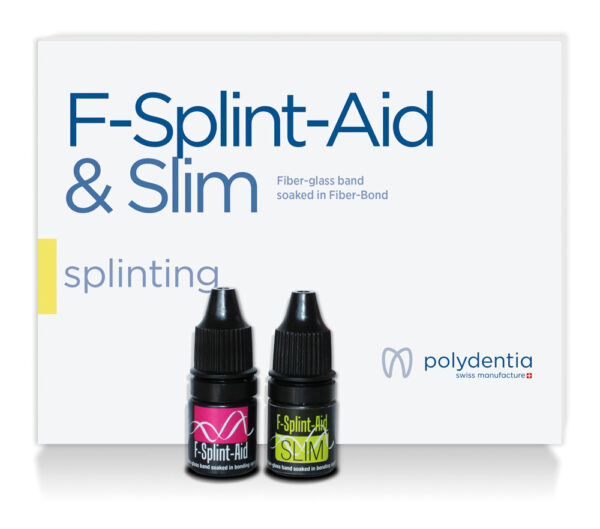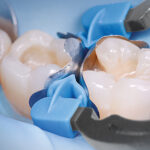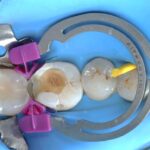26 May Dr. Sigrist – Periodontal Splinting – F-Splint-Aid Slim
Periodontal Splinting – F-Splint-Aid Slim
by Lukas Sigrist
case report
The female patient (77 years old) with good dental hygiene is severely troubled by the increased mobility of tooth 31. Despite missing teeth in the posterior lateral dental region, the patient wants to avoid a (partial) denture.
After consultation a generalised superficial marginal periodontitis with simultaneous occlusal trauma of tooth 31 was diagnosed.
The following case shows the splinting of tooth 31 with the other mandibular incisors.
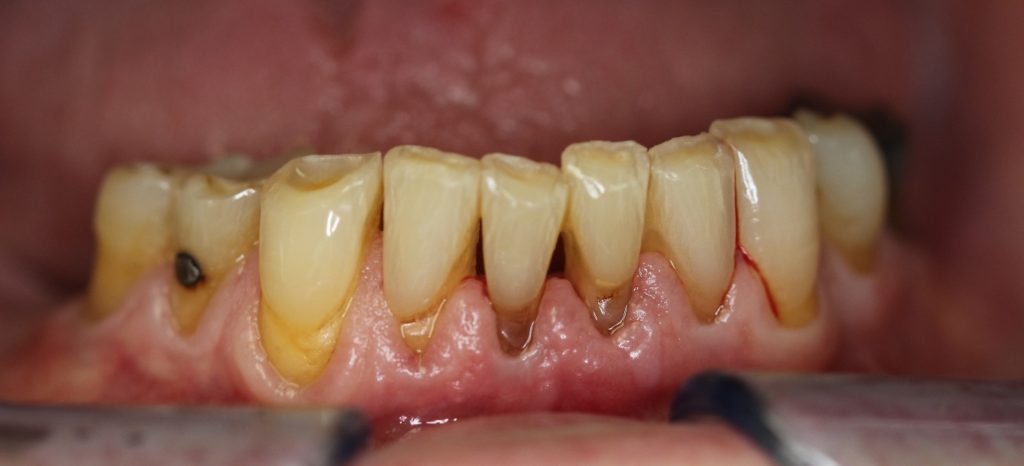
1: Pre-operative situation, buccal view of the front mandible
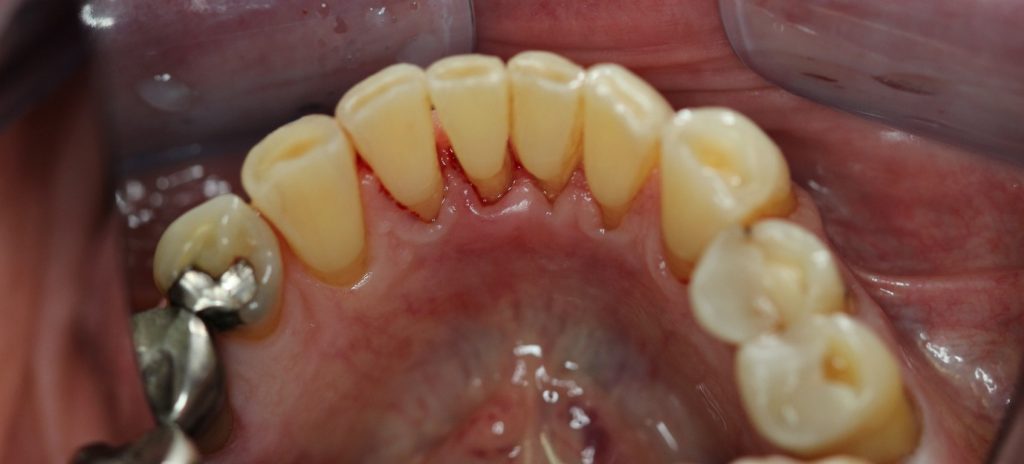
2: Pre-operative situation, lingual view of the front mandible.
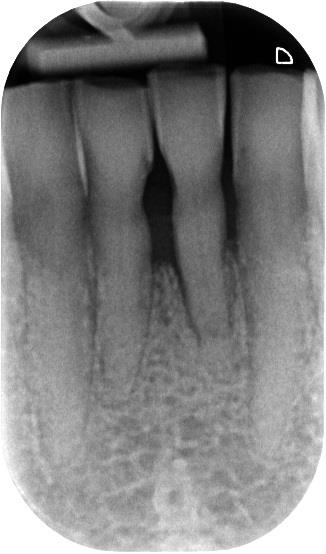
3: X-ray image of the mandible incisors.
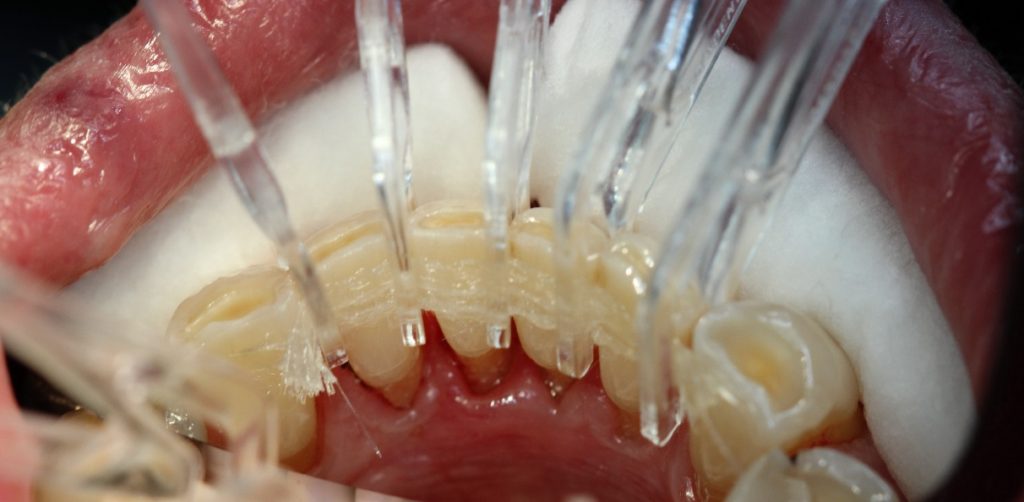
4:
After examining the occlusion, the enamel of the mandibular incisors is etched. With the heightened mobility of several teeth, initially it is recommended to lightly fix the desired position of the teeth by applying a bonding agent or a flowable composite in the interdental space.
This provides a stable working base. Then the F-Splint-Aid Slim fiberglass ribbon is neatly and precisely adjusted using the application clips. The clips facilitate an ergonomic operation, assisting in the positioning of the splint and allowing the fiberglass ribbon to be pushed well into the approximal region. In the desired position, the fiberglass ribbon can then be polymerised. After the removal of the clips, the fiberglass ribbon is covered with the flowable composite and the work is finalised.
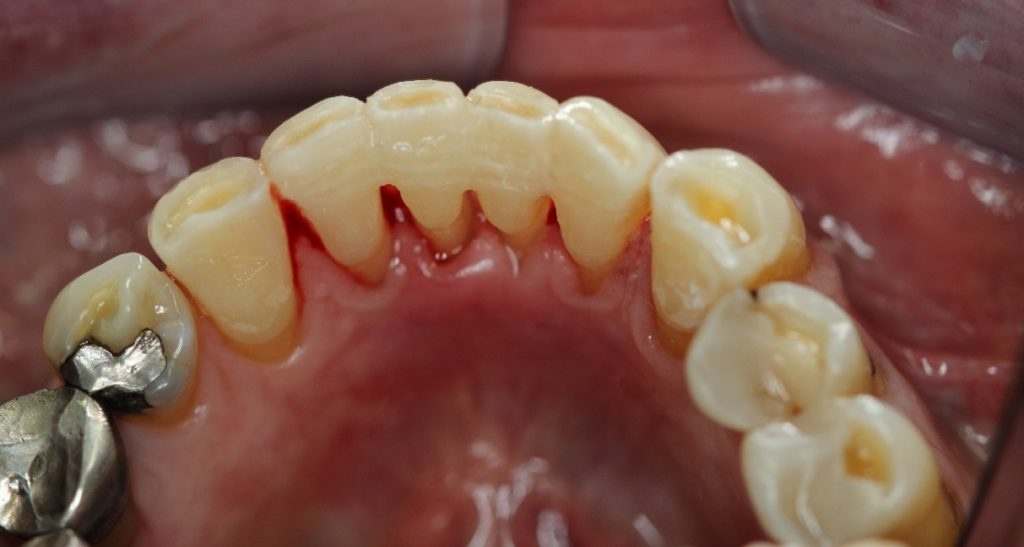
5: Post-operative lingual view of the splinting.
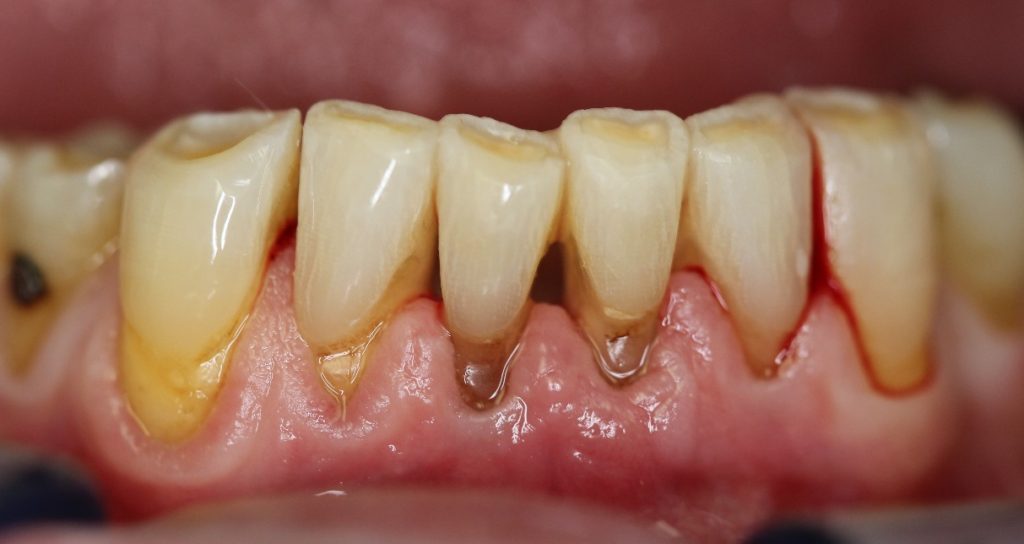
6. Post-operative buccal view after preparing the splinting. There is no aesthetic impairment and cleaning of the interdental spaces is not hindered. .
conclusions
In no time at all Polydentia’s F-Splint-Aid Slim enables the easy and inexpensive periodontal splinting of mobile teeth. As splinting with this system can be designed very delicately, it is also very well tolerated by patients. It works without disturbing the function or affecting the teeth aesthetically.
other clinical cases
-
Class II adjacent cavities on 1st and 2nd molars – QuickmatFIT anatomical sectional matrices & myRing Forte – Dr David Gerdolle
A 28-year-old female patient, without any systemic medical conditions presented with a carious lesion affecting both molar 46D and 47M. The following case illustrates the direct composite restoration of the lesion using the Polydentia QuickmatFIT anatomical sectional matrices in combination with myRing Forte and myWedge plastic v-shaped wedges....
-
Class II cavity direct composite restoration on a young permanent premolar – myClip 2.0 – Dr Marina Papachroni
For young patients rebuilding the anatomy in class II cavity restorations is a major issue but not making too many occlusal adjustments after finishing the layering procedures is one of the same importance aspects. The following images show the step-by-step treatment we performed for treating decay on the upper first premolar of a 15-year-old teenager. ...
-
Class II cavity direct restoration on young permanent molar with myQuickmat Forte – Dr Marina Papachroni
Class II (interproximal) decay involves the proximal surface of a posterior tooth and it is a common occurrence in many dental patients. One challenge for the clinician is to accurately recreate a physical contact to the adjacent tooth and, at the same time, to restore proper interproximal anatomic form. This case involves a teenager 16 years old with an interproximal lesion in his left lower molar (#36)....
-
Class II direct composite restoration on first premolar – QuickmatFLEX sectional matrices and myClip Junior – Dr Marina Papachroni
A male teenager came to our office feeling pain in the upper left quadrant. We proceeded with a Class II restoration of the first premolar without removing brackets. The following images show the step-by-step direct composite restoration procedure using the premolar sectional matrix QuickmatFLEX in combination with the paediatric sectional matrix ring myClip junior. ...
-
Class II restoration of a primary molar – myRing Junior – Dr Sabová
The young patient came for a periodic checkup. After a preliminary analysis we found a class II mesial carious lesion on primary molar 6.5. Since the dimensions of the carious lesion were limited, we decided to proceed with a direct composite restoration procedure using myJunior kit from Polydentia. ...
-
Class II restoration on a first molar – QuickmatFIT anatomical sectional matrices and myRing Forte – Dr Cristian Scognamiglio e Dr Alessandro Perucchi
The patient came for a consultation complaining of discomfort at tooth 36 when chewing. Molar 36 presented a very old composite restoration with initial disto-occlusal infiltration. We decided to carry out an OD restoration that also involved the buccal surface in order to replace the filling with a new aesthetic restoration. In this clinical case, we illustrate the procedure for the step-by-step restoration of tooth 36 using the Polydentia QuickmatFIT Molar sectional matrix in combination with the myQuickmat Forte sectional matrix ring....
-
Class II restoration on second bicuspid – myQuickmat Forte kit – Dr. Chiodera
The Polydentia myQuickmat Forte kit is a very effective system for posterior class II restorations....
-
Diamond24, 24 solutions for your restorations of Class II cavities
Diamond24 and myRing Classico: 24 solutions for your Class II restorations. Read the article written by Dr. Chiodera, which explains how to get great contact points with Diamond24 and myRing Classico for Class II cavity restorations. ...
-
Dr. Chiodera – Class III restoration – Unica anterior
The patient came to our attention for a regular check. A first analysis revealed a class III carious lesion on incisor 21. We decided to eliminate the carious lesion and proceed with a direct composite restoration of the cavity....
-
Dr. Chiodera – MOD restoration on first Molar – myQuickmat Classico kit
The Polydentia myQuickmat Classico kit is a very efficient system for posterior class II restorations....

